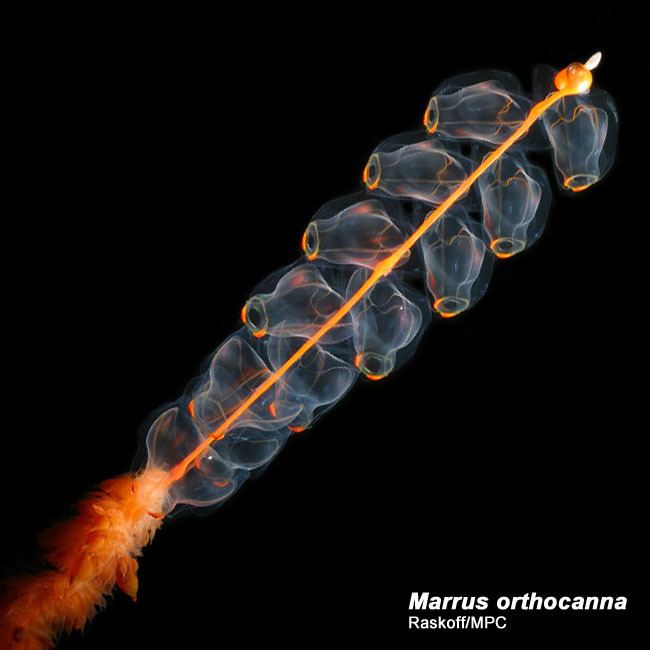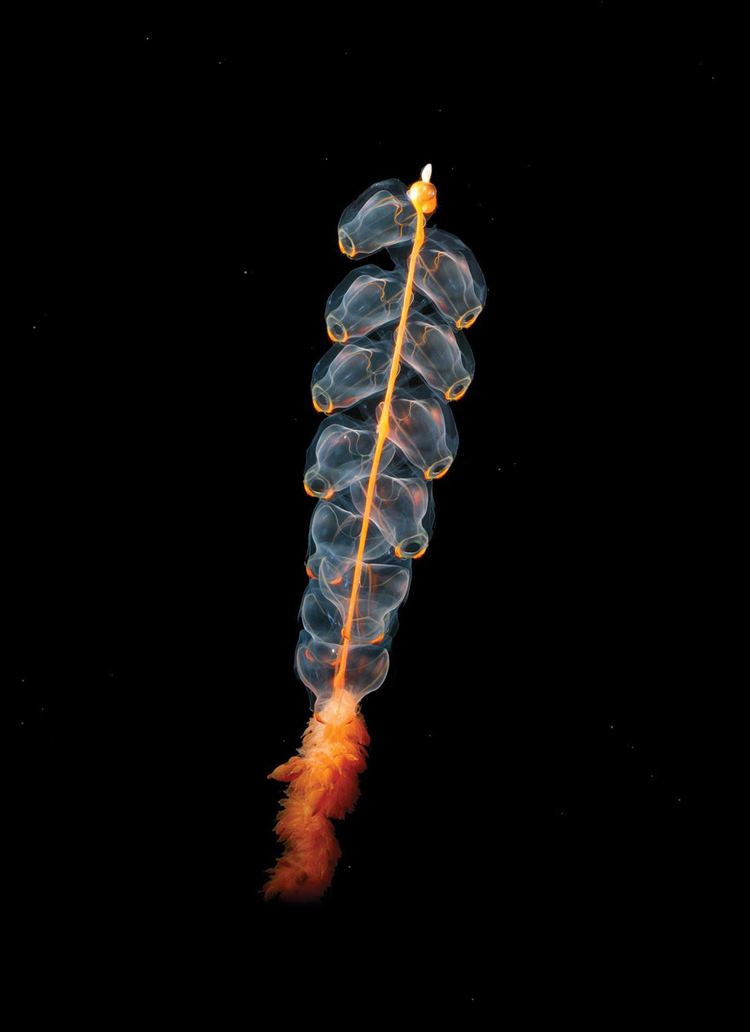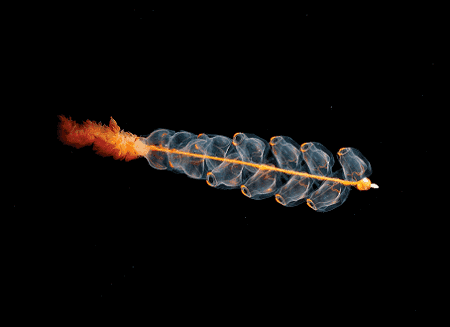Family Agalmatidae Rank Species | Order Siphonophorae | |
 | ||
Similar Siphonophorae, Venus flytrap sea anemone, Atolla jellyfish, Barreleye, Atolla | ||
Marrus orthocanna by your side
Marrus orthocanna is a species of pelagic siphonophore, a colonial animal composed of a complex arrangement of zooids, some of which are polyps and some medusae. It lives in the Arctic and other cold, deep waters, swimming independently in mid-ocean.
Contents
- Marrus orthocanna by your side
- Marrus orthocanna 01 ellesmerocerida cephalopoda
- Description
- Distribution and habitat
- Biology
- References

Marrus orthocanna 01 ellesmerocerida cephalopoda
Description

Like other siphonophores, Marrus orthocanna is a colony composed of a number of specialised zooids linked together by a long stem. At the front is the pneumatophore, an orange-coloured, gas-filled float. Behind this is the nectosome, a region where there are a number of translucent nectophores with red, unlooped radial canals. These are bell-shaped medusae specialised for locomotion. When they contract, water is expelled which causes the colony to move. Their contractions are coordinated which enables the animal to swim forwards, sidewards or backwards. The remaining region is the siphosome. Most of the zooids here are polyps, specialised for collecting food. They do this for the whole colony, spreading their single long tentacles in the water to snare prey. Other zooids in this region undertake digestion and assimilation of food items. Reproductive medusae are found among the polyps in the siphosome and also various other specialised zooids. The various forms are all arranged in a repeating pattern.
Distribution and habitat

Marrus orthocanna occurs pelagically in the mesopelagic zone of the Arctic Ocean, the north west Pacific Ocean, the Bering Sea, the Sea of Okhotsk, the north Atlantic Ocean and the Mediterranean Sea. It is found at depths ranging between 200 and 800 m (660 and 2,620 ft). The greatest depth at which it has been observed is about 2,000 m (6,600 ft). At these depths the temperature is about 4 °C (39 °F), hardly any light penetrates from the surface and human observation is limited to what can be seen from submersible craft.
Biology

Marrus orthocanna can be several metres long and the tentacles can extend fifty centimetres on either side. It moves forward intermittently before pausing to put out its "fishing lines", ready to ensnare passing creatures. It is a carnivore whose diet is thought to consist mainly of small crustaceans such as decapods, krill, copepods and mysids.

This colonial animal arises from a single fertilised egg. The protozooid that develops from this subsequently buds to form the other members of the colony which are thus genetically identical. The protozooid first thins and elongates, the middle section becoming the stem of the colony. The pneumatophore forms at the opposite end to the mouth. Next a growth zone on the thin stem forms and budding occurs with the formation of the nectophores. As the stem continues lengthening, further zooids develop above these. Another growth zone sees the development of the siphosome and the continuing elongation of the stem carries these zooids down with it. The division of labor among the zooids is an evolutionary advance in the constant struggle for existence in the deep sea. Such organisms as Marrus orthocanna blur the boundaries between the individual polyp and the whole colonial organism; each cannot exist without the other.

